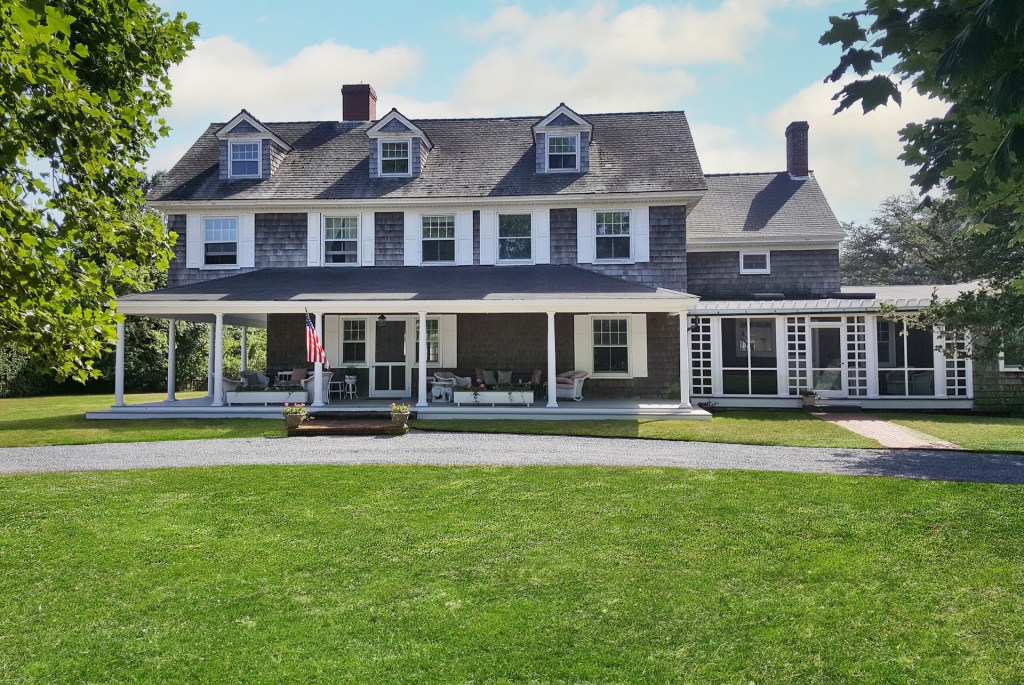Too Much Sun? The Terrible Mistake That Created Daylight Savings Time

Daylight Savings Time ended in America at 2 a.m. on November 6. Here in the Hamptons, that meant people who were used to coming home from work at 5 p.m. into a lovely sunset suddenly found that the sun was already down. It had set at 4 p.m. and the world was now dark. They’d drive home muttering to themselves.
Indeed, as the upcoming days fly by, this situation is only getting worse. In early December the sun will set in the middle of the afternoon, depressing everybody even further. That is why we have Christmas tree lights all over town, and all over towns everywhere else in America. These lights cheer us up a bit as we drive home in the dark. But then, after Christmas, we take the lights down and depression sets in again until May 6, when Daylight Savings Time again comes into effect.
A lot has been written about how Daylight Savings Time started. Some say the Germans started it in the early part of the 20th century to save fuel during the First World War. Others say it has to do with farmers, or kids going to school in the dark or President Roosevelt in mid-century and World War II.
My Uncle Ed was the great storyteller in my family, and he used to get us kids to gather around so he could relate the many efforts that came before Germany and the First World War, not to move the clocks back and forth within the existing daylight, but to make more hours of daylight and less hours of nighttime every day. Everyone wanted more daylight. A Belgian mathematician thought it could be done. It would be the wonder of the age.
Uncle Ed said it was the failed attempt to do this in the late 19th century that brought about Daylight Savings Time. Daylight Savings Time was an accident.
Everywhere in the world, around the end of that century, remarkable things were being invented. Fulton invented the steamboat. Richard Trevithick invented the steam-powered locomotive. Edison invented the electric light, Alexander Graham Bell the telephone, Karl Benz the automobile. George Eastman invented the camera, Wilhelm Conrad Röntgen the X-ray, the Wright Brothers the airplane. The sky, it seemed, was the limit.
In Belgium, a mathematician by the name of Hans Bregmeister Holmstead got the idea of expanding daylight. He had discovered a mathematical formula.
In those years, people kept time by looking up at clock towers atop railroad terminals everywhere. High up in each clock tower, teams of laborers put iron cranks into gears to move the heavy hands of giant clocks forward one click, every minute. These men would know when to do this because the master clock tower, as it was called, was located in the famous city of Liege, Belgium, and the clock tower at the next station down the line was close enough for the people inside to see it. When Liege moved its minute hand, the next clock tower workers moved theirs, and so forth and so on all through Europe and then across the ocean to the clocks overseas.
You never heard of Hans Bregmeister Holmstead, because his experiment not only failed, it caused a whole unexpected shift in telling time everywhere. His name is relegated to the dumpster in Liege.
The year was 1892. Holmstead had calculated that the relationship between the setting sun and rising moon would result in this effort working if done at exactly 5 p.m. on September 6. Standing on a ladder late that afternoon on the cobbled street alongside the railroad station in full view of the dozen men working the afternoon shift up in the Liege clock tower, he raised a red flag at 4:59 p.m., held it there, and then, exactly when it would have been 5 p.m., he waved that flag. Up in the clock tower the big hand did not move. Instead, the men, by pre-arrangement, moved the little hand, the hand that marked the hour, back an hour. It was now 3:59 p.m. And so, in the tower of the next railroad station down the line, the little hand was moved backwards one hour, and so forth and so on all through the world.
After that, using a bullhorn (megaphones had not yet been invented), Holmstead counted slowly down from 60. And when he reached zero, the men in his tower, again by pre-arrangement, moved the big hand one minute forward. Around the world, the time of daylight had just been lengthened by one hour and one minute. Success!
Unfortunately, the following morning, the sun rose an hour earlier, when everybody was still sleeping. Riots ensued. Holmberg was arrested and sent to jail. Attempts were made to undo the damage he’d done and the chaos that had ensued when people showed up at the wrong time to meet a train everywhere.
It took exactly six months, Uncle Ed told us, before a committee in England in the town of Greenwich discovered the error in Holmberg’s calculations and were able to fix it. And so, Liege time was re-set and everything was restored as before.
However, amazingly, the following autumn the clocks all set themselves back an hour on September 4. The workmen hadn’t touched them. It had happened on its own. New workmen were brought in, but they just stood there scratching their heads. Then in the spring, the clocks shifted forward again all by themselves. How could this be?
After a few years of this, the people in the western world decided they liked the clocks getting set back in the fall and forward in the spring. So it was decided, again by that committee in Greenwich, to just leave things alone forever after. And so it was. And that’s how this came about.
In Michael Downing’s book, Spring Forward: The Annual Madness of Daylight Saving Time he writes that in 1917, the year after the Germans set the clocks back, the English and French did, too. And when the war ended, they stopped doing it. He writes it didn’t get put into effect again until the Second World War, when President Franklin Roosevelt ordered it done to save fuel. After the war, the government said it could be undone. The towns and villages should decide. As a result, some parts of America went off Daylight Savings Time, while other parts stayed on it. It was chaos. And so, Downing writes, President Lyndon Johnson passed the law requiring all states to adopt it to end that problem, and when all did, except Arizona, it was better. Downing says that President Richard Nixon then added one month to Daylight Savings Time so it ends November 6. It’s all lies, all lies.
My Uncle Ed also told us he had been a soldier in World War I. He was assigned the job of guarding the Parsippany Reservoir in New Jersey. One evening, just after the sunset, he spied 10 German soldiers sneaking around the curve of the reservoir. He had only one gun and one bullet. What to do? Using all his strength, he bent the barrel of his gun, aimed it at the side of the reservoir and pulled the trigger. The bullet curved along, went through each of the Germans one by one, came all the way around the reservoir and back into his gun. And that’s how he saved America.



